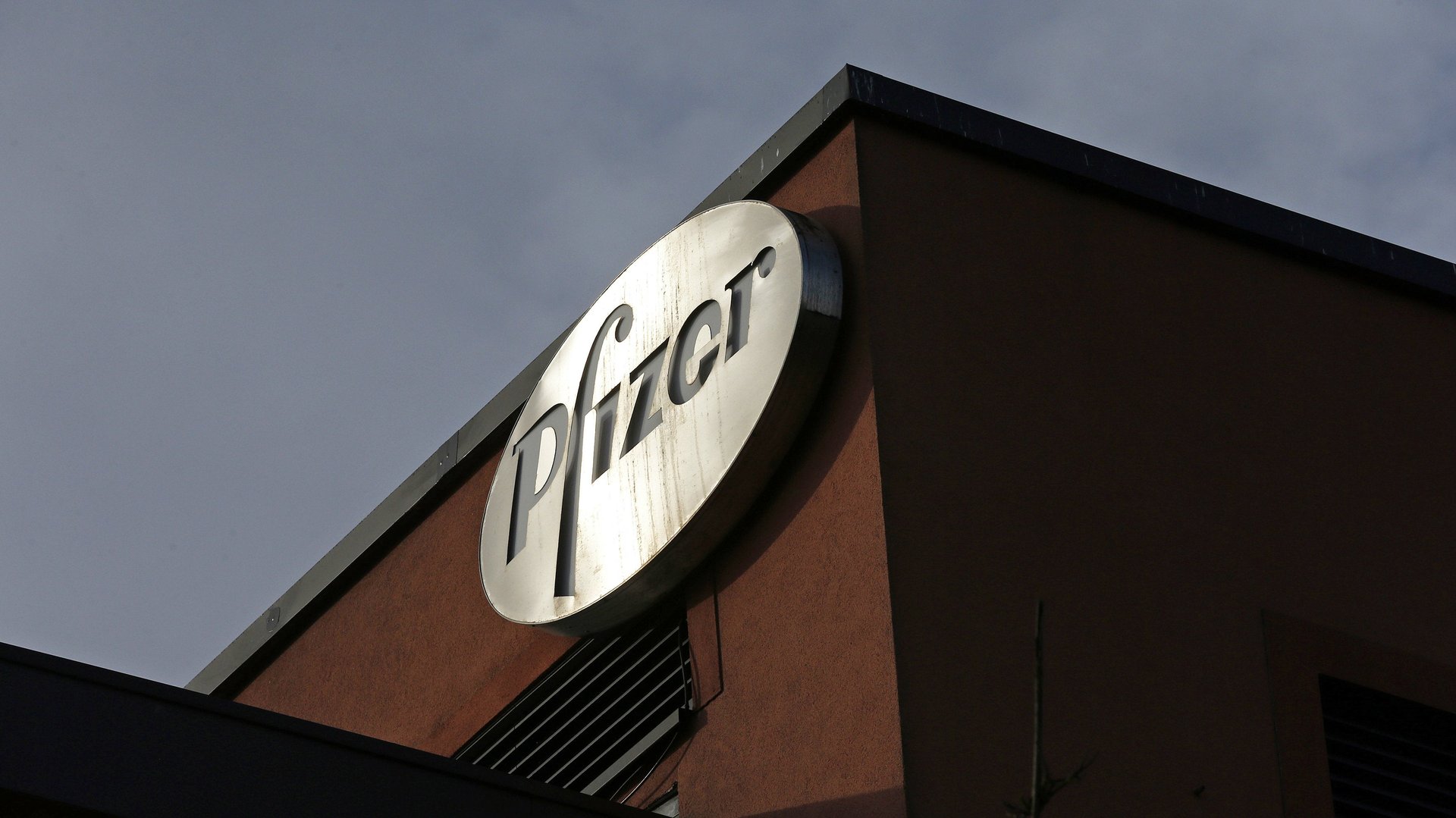Why we know so little about Pfizer’s vaccine deal with the US
On Nov. 9, Pfizer and its partner BioNTech announced some early results for their Covid-19 vaccine candidate. Data from a late-stage clinical trial show the two-dose shot could be 90% effective at preventing infections—a promising development that quickly devolved into a fight for bragging rights.


On Nov. 9, Pfizer and its partner BioNTech announced some early results for their Covid-19 vaccine candidate. Data from a late-stage clinical trial show the two-dose shot could be 90% effective at preventing infections—a promising development that quickly devolved into a fight for bragging rights.
Vice president Mike Pence attributed the news to Operation Warp Speed, the Trump administration’s “public-private partnership,” while Pfizer tried to take credit for its own work. Although the company did strike a deal worth $1.95 billion for the US government to purchase 100 million doses of the vaccine, it emphasized that it received no federal funding for vaccine research and development.
What’s behind the confusion? In part, it’s because of the way many Operation Warp Speed contracts have been executed, with their terms largely invisible to the public.
Operation Warp Speed (OWS) is the public face of the federal effort to rapidly develop and distribute vaccines and treatments for Covid-19. But under the hood, the effort’s largest agreements with vaccine companies—totaling more than $6 billion—have been managed by a third party, a defense-oriented nonprofit called Advanced Technology International (ATI). A new crop of vaccine agreements set to be made through ATI may be just as opaque as the first.
For more than 20 years, ATI has managed federally-funded research and development collaborations for the Department of Defense. One of those collaborations, the Medical CBRN Defense Consortium, is focused on protecting military personnel against chemical, biological, radiological, and nuclear threats—including viruses they could encounter in the line of duty, like Ebola.
So ATI had some experience with vaccine deals before the pandemic. On Jun. 9, it made the shift to Covid-19 vaccines, soliciting companies’ proposals for research, development, and large-scale manufacturing. Less than a month later, the US had made its first agreement, a deal with Novavax worth up to $1.6 billion.
But the precise terms of that deal, and the one with Pfizer that came shortly after, are still unclear.
We know the basics: Novavax, for example, is authorized to spend a certain amount of the total payment—$800 million—in the course of developing and manufacturing its vaccine candidate. After a check-in this December, they’ll reassess the agreement and potentially agree to pay all the way up to $1.6 billion, according to a quarterly report issued in August. “By funding Novavax’s manufacturing effort,” OWS explains, “the federal government will own the 100 million doses expected to result from the demonstration project.”
Not every deal, however, included that kind of up-front investment. “We have never taken any money from the US government, or from anyone,” Kathrin Jansen, a senior vice president and the head of vaccine research and development at Pfizer, told the New York Times. The $1.95 billion in its agreement will only be paid out when the government takes delivery of the vaccines, after they are authorized for emergency use by the Food and Drug Administration (FDA).
It would be easier to understand the difference between investment and procurement—and what Operation Warp Speed could reasonably take credit for—if the contracts were made public. Normally, when the government makes an agreement with a contractor, it has to follow federal acquisition regulations. But with ATI as an intermediary, these billion-dollar deals instead fall under something called an “other transaction agreement” that isn’t subject to the same kinds of cross-checks and accountability.
Requests by journalists at NPR and public accountability organizations have led to the release of redacted versions of some vaccine agreements, including contracts with Janssen and Moderna. As NPR’s Sydney Lupkin reports, Janssen’s contract (though not Moderna’s) does not include a typical “march in” clause, which would allow the federal government to step in and manage the vaccine if a contracted company can’t deliver, or sets an unfairly high price. On Oct. 15, watchdog groups sent in FOIA requests to multiple agencies to seek the full text of vaccine and therapeutic agreements with companies including Novavax and Pfizer.
It’ll be especially important to understand the parameters of those agreements as vaccine developers approach the milestones established by the FDA.
Pfizer’s vaccine is expected to hit a major safety milestone—monitoring 50% of patients for two months after their second dose for side effects—in late November. If final efficacy data are similar to this early, non-peer-reviewed release, the vaccine could be the first to be authorized and distributed within the US. And once a vaccine is authorized, it will increase pressure to ramp up manufacturing as quickly as possible.
That seems to be the goal of ATI’s next major solicitation. On Sept. 18, it put out a call for proposals focused on “vaccine manufacturing scale up,” which are due by Nov. 19. Just like the first round of contracts, the details of this allotment will likely be shielded from public view.